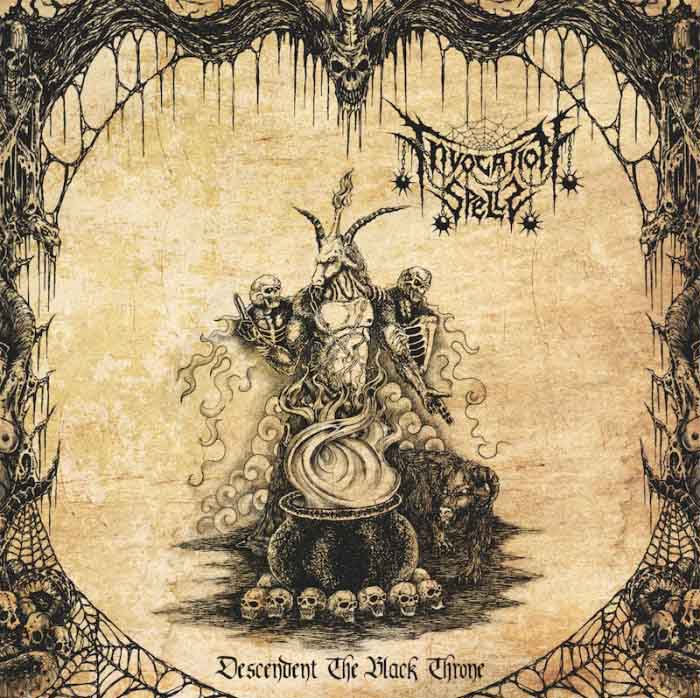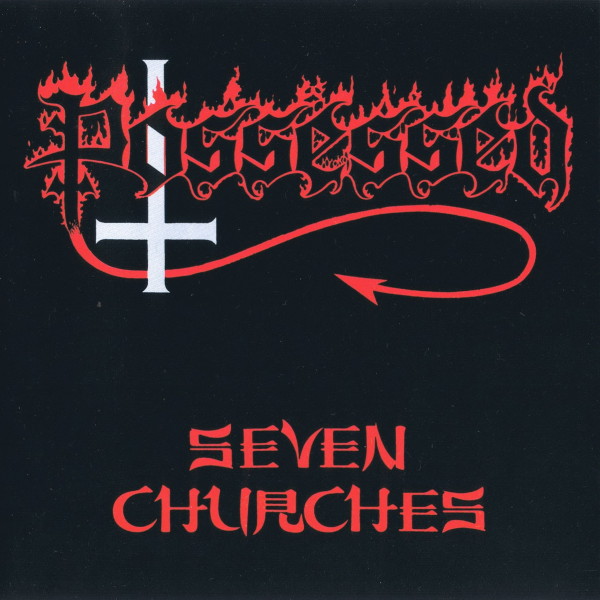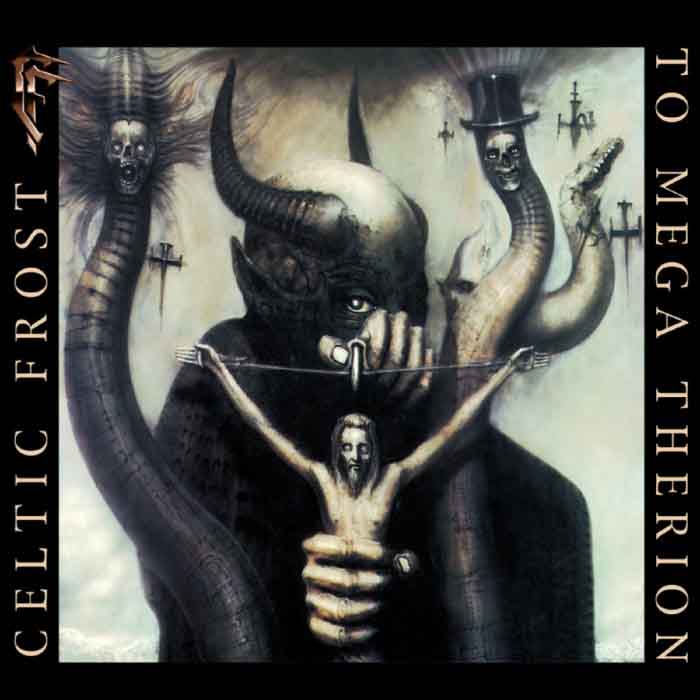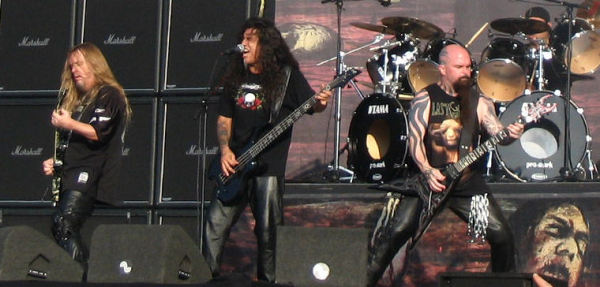Downward strums; rock-like, minimalist d-beats; a repetitive, constant duple-time cadence that becomes a familiar entrancing device. These are all the hallmarks of eighties Hellhammer inspired evil speed metal plus plus. What we hear in Descendent The Black Throne is, basically, what we would hear if Tom G. Warrior were more “progressive” minded and less careful about creating a strong atmosphere of darkness (Editor’s note: Tom eventually got around to that in a fashion on Celtic Frost’s Into the Pandemonium, although such is certainly not Hellhammer inspired).
It is precisely the feeling that Invocation Spells seem to be more bent on the “evil of fun” rather than the “fun of evil” of a Hellhammer. This can be seen in the fact that songs focus on the variety of rhythms rather than in respecting motifs and emphasizing them. Now, this is not the mindless progressive obsession that refuses to produce any sort of repetition as sections are, in fact, reused, but the different sections seem to bear little relation to each other outside stylistic coherence. This forward momentum that emphasizes rhythmic acceleration and intensification over clarity makes Invocation Spells’ Descendent The Black Throne akin to run-of-the-mill “infernal”, pseudo-black, speed metal of the eighties.
While I could recommend this for fans of this particular style of metal, what I would actually recommend is that you download Hellhammer’s full discography, as well as Bathory’s and Celtic Frost’s early output and make this the sole repository of your attention to this spectrum of minimalist evil metal. Nothing you find out there rivals them, and if you want to get acquainted with excellence and not just flooded with quantity, you have a choice to make. Oppose irrelevance. Oppose mediocrity. Avoid mental indolence.
Tags: 2015, Bathory, celtic frost, descendent the black throne, hellhammer, invocation, proto-underground





